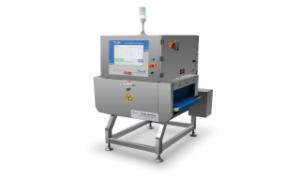How does a food inspection X-Ray machine work?
Machines using x-ray for food inspection scan food products and detect any
foreign objects or contaminants that may be inside. The X-rays pass through the
food, creating a digital image that can be analysed by the machine's software
to identify and flag any potential issues. The machine can also be programmed
to automatically reject contaminated products, ensuring that only safe food
items reach the consumer. The level of radiation used in these machines is
typically low and safe for both the food and the operator.
Key Features of Food X-Ray Machines
A machine using x-ray for food
inspection typically has the following
features:
●
High sensitivity to detect contaminants such as metal, stone, bone,
glass, and plastic
●
Ability to inspect packaged or bulk products
● Real-time inspection capabilities
●
Ability to differentiate between food and foreign objects
●
User-friendly interface with visualisation tools
●
Customizable settings for different food products and packaging
●
Compliance with food safety regulations and standards
● Robust design for industrial use
●
Automatic reject mechanisms for contaminated products
●
Data storage and reporting capabilities for quality control and
traceability.
Use of Load Cell in Food X-ray Machine
Load cells are used in x-ray for
food inspection to measure the weight
of the food products being inspected. This information is then used to
calculate the density of the food, which can be used to identify the presence
of contaminants such as metal, bone, or plastic. It helps ensure that the x-ray
machine is functioning correctly and that the results of the inspection are
accurate.
Additionally, the load
cell can be used to track the weight of the food products over time, providing
information on trends and patterns that may indicate problems with the
production process or the presence of contaminants. The load cell is an
important component of a food x-ray machine, as it helps to ensure that the
food products being inspected are safe for consumption. Hence, we recommend
buying load cells in Australia from the
best manufacturer of industrial machines out there.
Bottle Labelling Powered by X-Ray Machines
X-ray machines for
drink packaging and bottle labelling work by using X-rays
to inspect the contents of sealed containers, such as drink bottles or cans,
for potential contaminants, foreign objects, or fill-level issues. The X-rays
penetrate the container and produce an image of the contents that can be analyzed
to identify any anomalies.
Here's how it works:
●
The container is placed on a conveyor belt and moves through the X-ray
machine.
●
X-rays are emitted from a source and pass through the container and its
contents.
●
The X-rays that pass through the container are captured by a detector on
the other side, which generates an image of the contents.
●
The image is then analysed by the machine's software to identify any
potential contaminants, foreign objects, or fill-level issues.
●
If any anomalies are identified, the machine can reject the container or
flag it for manual inspection.
This technology is
commonly used in the food and beverage industry to ensure the safety and
quality of packaged products before they reach consumers. Hence, it offers a
high level of quality and security for your products.
If you’re looking for
an exemplary machines for packaging, we recommend
checking out Optima Weightech, a leading industrial machine manufacturer
based in Australia. They offer the best machinery at competitive prices in
Australia.




Comments
Post a Comment